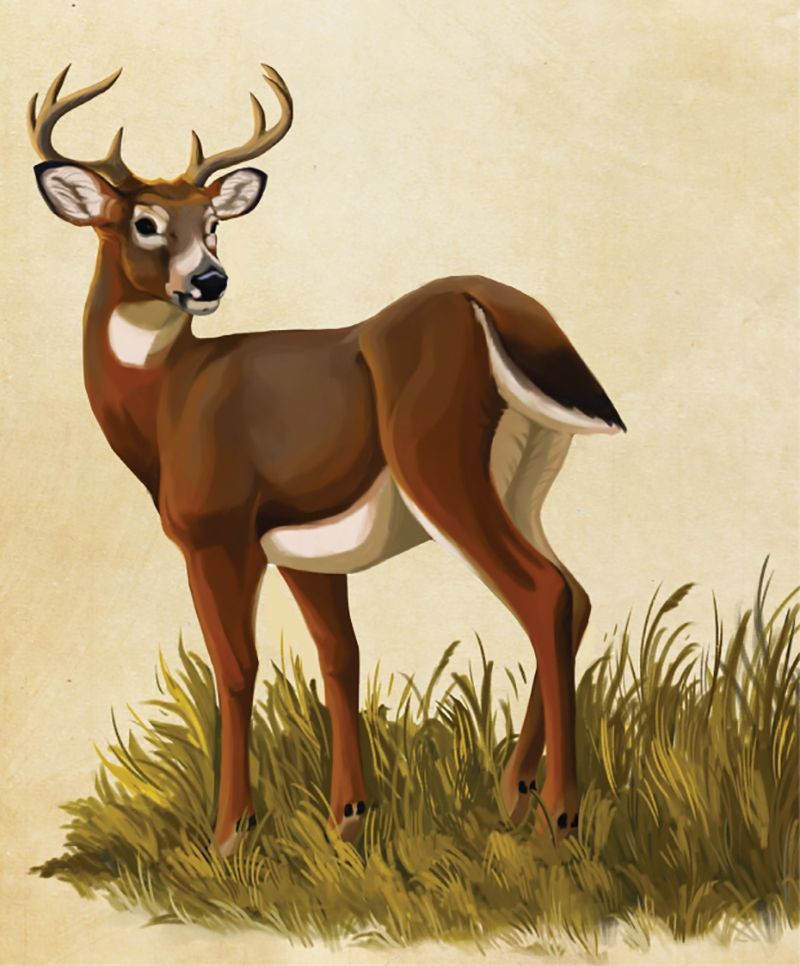
Check Mate Courtship activities begin around mid-October, with males often chasing their female conquests for nearly a week prior to mating. The buck remains with the doe for a few days to keep other suitors at bay, then moves on to find additional partners before the breeding period—called ”rutting”—ends.
Numbers Game Because deer breed so easily, they can quickly become overpopulated, particularly now that many of their former natural predators, such as wolves and cougars, are dwindling. Hunting is considered an efficient way to keep their numbers in check, and it is carefully regulated, with season dates and harvesting methods and limits adjusted annually.
Into the Blue With eyes that only contain two classes of photoreceptors, these mammals can’t distinguish some colors, including orange (thus hunters often don it). However, deer far surpass us in their ability to see blue and ultraviolet hues—the very ones most prevalent during their peak feeding times: sunrise and sunset.
Bambi Bambinos At birth, fawns are covered with spots that help camouflage them until they are large enough to begin foraging, at approximately eight to 10 weeks old.
On the Menu Like sheep and cows, deer are ruminants, meaning they have four-chambered stomachs. This tummy trait allows the animal to eat materials—such as the buds and twigs of woody trees and shrubs—that some other critters can’t digest. Wild herbs and fruits (including acorns) are beloved snacks, as are crops like corn.
Big Bucks Males are primarily recognized for their antlers; an older animal usually boasts a larger ”rack” with more points. Shed in early winter, the boney structure starts growing back in the spring, covered with a fuzzy tissue. This ”velvet” is loaded with nerve endings that make antlers very sensitive to pain. Prior to mating season, blood flow to the rack ceases, feeling disappears, and bucks scrape their headgear on trees, rubbing away the velvet.
White Flag Come September, decreasing daylight triggers the creature’s coat to grow thicker and darker—the better for retaining body heat and blending into wintertime settings. What doesn’t change is the bright white underside of the animal’s tail. When surprised or alarmed, the deer flicks this feature straight up in an alert to comrades and then runs away in a zig-zagging motion.